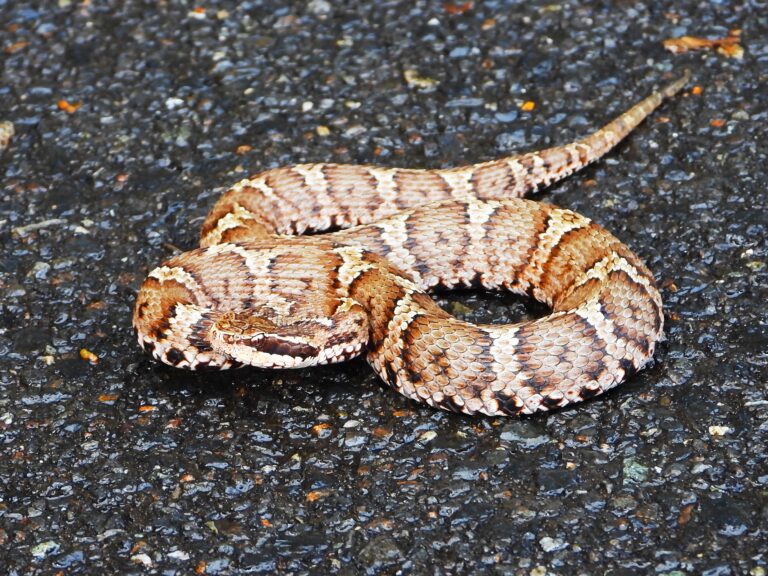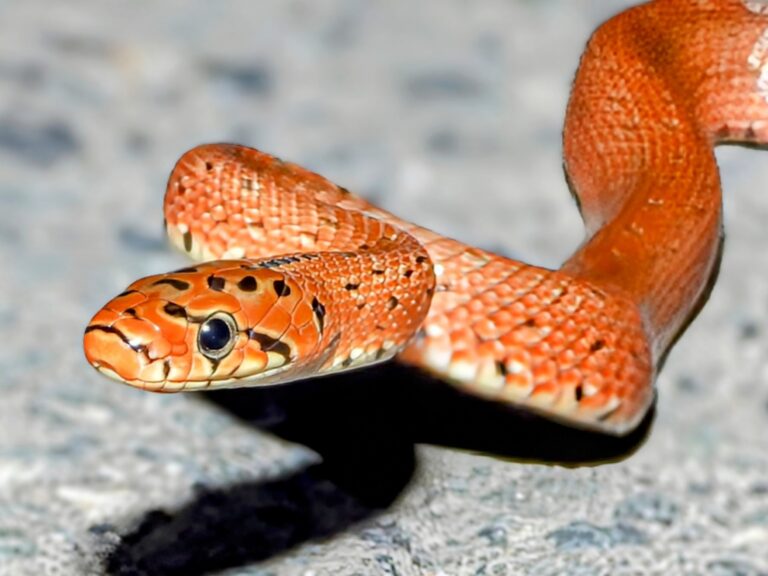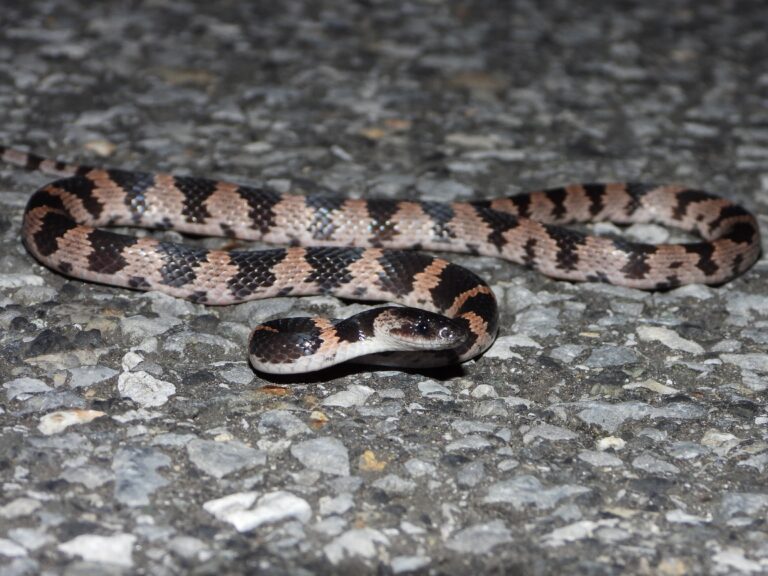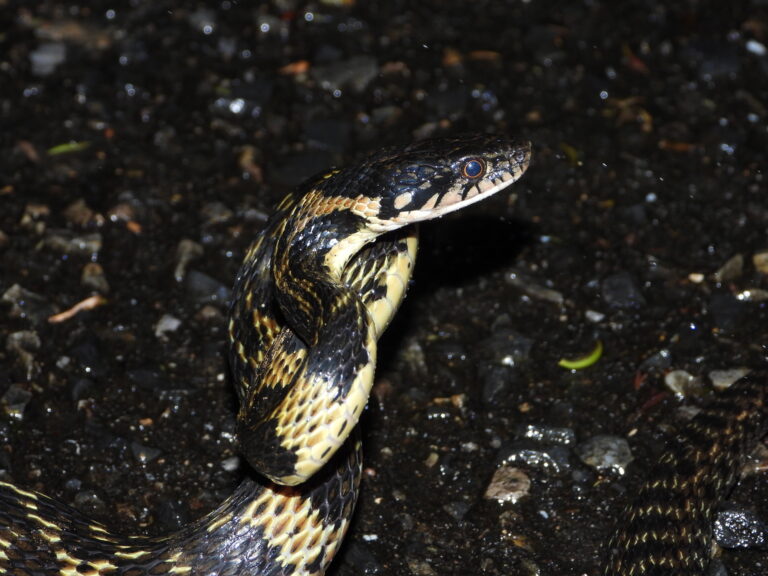Sakishima Habu (Protobothrops elegans) – Wildlife of Japan
Introduction
The Sakishima Habu (Protobothrops elegans), also known as the Elegant Habu or Elegant Pit Viper, is a venomous pit viper found in the southern Ryukyu Islands of Japan, particularly the Yaeyama Islands such as Ishigaki and Iriomote. Though related to the larger Okinawa Habu (P. flavoviridis), this species is smaller and somewhat less venomous. Its limited distribution and adaptability to human-influenced landscapes make it a fascinating subject for ecological and conservation studies.
Appearance
Adult Sakishima Habu usually measures between 60 cm and 120 cm in total length, with a slender body compared to most pit vipers. The dorsal coloration varies from brown to grayish brown, often patterned with alternating darker bands. Some individuals display orange or pale tones, particularly on Ishigaki Island. The head is broad and triangular, with characteristic heat-sensing pits between the eyes and nostrils.
Habitat & Distribution
The Sakishima Habu is native to the Yaeyama Islands, including Ishigaki, Iriomote, Kohama, Kuroshima, and Taketomi. It inhabits forests, forest edges, sugarcane fields, and even near human settlements. Interestingly, a non-native population was accidentally introduced to Okinawa Island in the 1970s, where about 100 individuals escaped from a tourist facility and established a breeding population in the south around Itoman City.
Behavior
Mostly nocturnal, the Sakishima Habu becomes active after sunset but may also move during the day in warm, humid weather. It often shelters under vegetation or rocks during the day. When threatened, it coils its body and raises its head in a defensive posture, hissing loudly before striking. Despite its venom, the species tends to be less aggressive than the Okinawa Habu.
Diet
This species preys on a variety of small animals, including frogs, geckos, skinks, small birds, and rodents. It is an ambush predator, waiting silently for passing prey before striking with a quick, precise bite. Its venom immobilizes prey quickly and aids digestion.
Reproduction
The Sakishima Habu is oviparous (egg-laying). Breeding takes place in early summer, typically June to July. Females lay 4 – 10 eggs under vegetation or soil cover. Hatchlings measure around 20 cm in length and are independent from birth.
Conservation
In its natural range, the Sakishima Habu is listed as “Least Concern” by the IUCN, meaning it faces no major conservation threats. However, the introduced population on Okinawa Island is considered invasive, posing risks to native reptiles and amphibians. Researchers also warn of possible hybridization with the Okinawa Habu, which could alter local genetics and ecosystems.
Author’s Impression
I encountered this species on Ishigaki Island. It was hiding quietly near a puddle along a forest path, blending perfectly with the ground. If you wish to find the Sakishima Habu, look carefully near streams, ponds, or other wet areas at night—you might spot one resting silently in the shadows. It’s a stunning yet venomous snake, so always keep a safe distance while observing.







